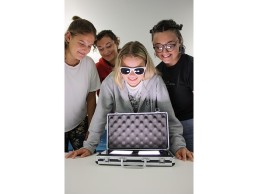
Brunel University take on ultra-thin lighting design challenge
(UK) – Brunel University London is to collaborate with Lightly Technologies on an ultra-thin lighting design challenge for 2nd year students.
Approximately 120 students will choose from one of three challenges that have been set by Lightly Technologies. From retro-replacement to the Japanese art of chindōgu to automotive design, the challenges have been designed to test design skills, foster innovation and explore new commercial opportunities in the application of ultra-thin lighting design.
Brunel University London and Lightly Technologies will choose three student projects from all submissions for further development. Finalists will be awarded a bursary with which to develop their concept to an advanced prototype and an overall winning design will be selected through a social media poll.
Speaking at the launch of the challenge in London, Lightly Technologies Marketing Director, Joe Farinella, commented: “This collaboration with Brunel University London is an incredible opportunity for Lightly Technologies to work with future leaders in design and innovation. Fresh thinking and new ideas are the lifeblood of our industry. We feel privileged to be able to support emerging talent by providing students with this opportunity to apply their learnings and express themselves creatively while giving them an insight into a possible future career path in lighting design.”
The three challenges are:
Design Challenge 1: Decorative Lighting Product
Retro-style LED filament bulbs are trending from New York to London and can be found everywhere from bars and restaurants to homes and hotels. The current trend has spread worldwide and is expected to reach a market valuation of $1.8B – $2B by 2020.
Design Challenge 2: Functional Lighting Product
The Japanese art of chindōgu involves combining unrelated products to create inventions that are wonderfully unusual. These inventions might not be immediately practical, but each one opens a door to new ideas that just might be.
Design Challenge 2 is to apply the principles of chindōgu to create a totally new, functional application for an ultra-thin light source that answers a real-world problem. Students must document how they have explored outside of their normal creative influences to seek out collaboration from people from a variety of disciplines, departments, cultures, ages, mindsets and orientations.
Design Challenge 3: Automotive Lighting
Design Challenge 3 is to devise an application for Hikari SQ in new car interior or exterior designs.
The Ultra-Thin Lighting Design Challenge will commence on 26 September with winners being announced on 30 October. Project submissions and updates will be available to view online and will use the #madeinbrunel hashtag.



